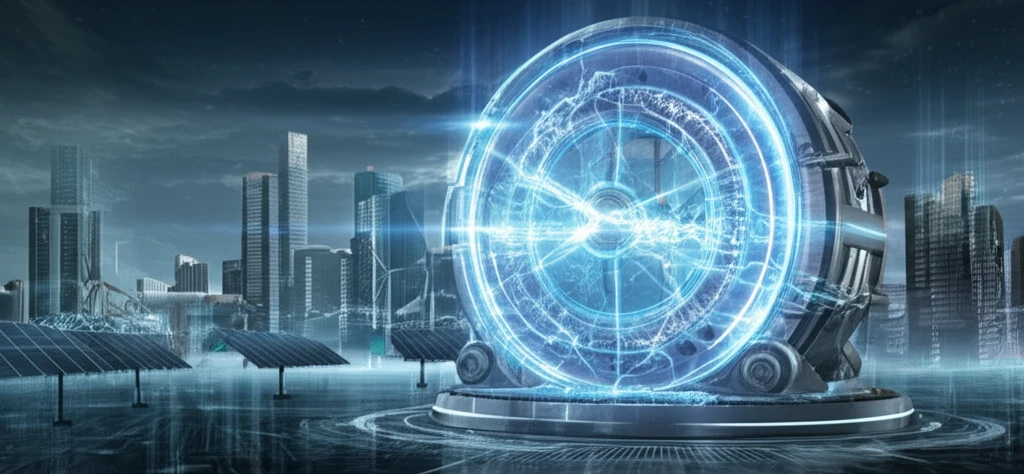
Energy on Demand: Can Flywheel Technology Power Our Future?
"Exploring the potential of flywheel energy storage systems as a sustainable solution to modern energy challenges."
In an era defined by escalating energy demands and a pressing need for sustainable solutions, innovative energy storage technologies are gaining prominence. Among these, the flywheel energy storage system (FECS) presents a compelling alternative to traditional methods like chemical batteries. A FECS operates by converting electrical energy into kinetic energy by accelerating a rotating mass (the flywheel) and vice versa, offering a unique approach to energy management.
Unlike chemical batteries that degrade over time and are sensitive to temperature variations, flywheel energy storage boasts remarkable durability and a longer lifespan, especially in extreme environments. This advantage makes FECSs particularly attractive for applications where reliability is paramount, such as grid stabilization, renewable energy integration, and uninterruptible power supplies.
This article delves into the exciting world of flywheel energy storage, exploring its underlying principles, advantages, and potential to revolutionize how we store and utilize energy. From enhancing the stability of electrical grids to enabling the widespread adoption of renewable energy sources, flywheel technology holds the key to a more sustainable and energy-efficient future.
What Makes Flywheel Energy Storage Different?

At its core, a flywheel energy storage system functions as a mechanical battery, efficiently storing and releasing energy as needed. This system comprises a rotating flywheel, supported by bearings (magnetic or mechanical), a motor/generator for energy conversion, and power electronics for control. The flywheel's rotational speed dictates the amount of stored energy; the faster it spins, the more energy it holds.
- Extended Lifespan: Flywheels can withstand hundreds of thousands or even millions of charge/discharge cycles without significant degradation, far exceeding the lifespan of most chemical batteries.
- Temperature Tolerance: Flywheels operate effectively across a wide temperature range, making them suitable for harsh environments where batteries may struggle.
- High Power Density: Flywheels can deliver large bursts of power quickly, making them ideal for applications requiring rapid response times, such as frequency regulation on the grid.
- Environmentally Friendly: Flywheels are made from readily available materials and do not contain hazardous chemicals, making them a more sustainable option than traditional batteries.
Flywheel Energy Storage: A Promising Path Forward
Flywheel energy storage technology presents a compelling solution for addressing the growing demand for sustainable and efficient energy storage. Its unique advantages, including long lifespan, temperature tolerance, and environmental friendliness, make it a valuable asset in various applications. As research and development efforts continue, we can expect to see flywheel energy storage playing an increasingly vital role in shaping a cleaner, more resilient energy future.
